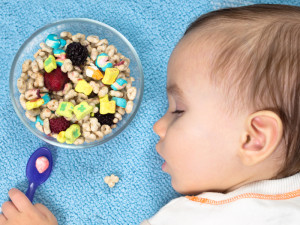What to do About Halloween Candy
/ Hallowe’en is a fun and exciting holiday for kids. And, while as a parent you may not love the idea of all that Halloween candy, the last thing that you want to add to an already hectic day is a battle over food.
Here’s some ideas about how to handle all that Halloween candy.
Hallowe’en is a fun and exciting holiday for kids. And, while as a parent you may not love the idea of all that Halloween candy, the last thing that you want to add to an already hectic day is a battle over food.
Here’s some ideas about how to handle all that Halloween candy.
Before I go into the ideas, first let me tell you that I’ve never come across any research studies where they specifically looked at family rules for Halloween candy and how it impacted kids’ life-long eating habits. But there have been studies about how sweets/ junk food in general are handled in the home and it’s impact on life-long eating habits, so that’s on which I’m basing my advice.
Toddlers, Preschoolers and Halloween Candy
Take advantage of toddlers’ and preschoolers’ naiveté and short attention spans. Limit the number of homes at which you trick or treat to only 2 or 3. This way they get to be involved in the fun of the holiday, but there isn’t too much candy received.
School-Age Kids and Halloween Candy
For school-age kids, I turn to the excellent advice of expert Ellyn Satter. I can’t say it any better than her, and because of copyright reasons I can’t cut and paste her advice, so use this link to read her short article here.
Candy Fairy / Switch Witch
I also like the idea of the growing tradition of the ‘Candy Fairy’ or ‘Switch Witch’. Inspired by the Tooth Fairy, kids can choose to leave out their candy for the ‘Candy Fairy’ who takes the candy away and leaves behind money. I’ve heard that some dentists and others are even getting in the act so that parents don’t have to pay out of pocket. An important point regarding this idea is that kids need to be able to have the choice of keeping their candy or leaving it for the ‘Switch Witch’. Remember, as Ellyn Satter shares, it’s important for kids to be given the opportunity to learn how to self-regulate with candy. The reality is that unhealthy food is all around us. It’s an important life skill to be able to make healthy choices.
And, if you’re still feeling anxious about your child and all that Halloween candy, I recommend taking a listen to exceptional story-teller Stuart MacLean tell about the antics of his fictional family. Here's the link to the podcast. I listened to it on the weekend and was laughing out loud. Not only was I laughing at the story that Stuart was telling, I was transported back to my own childhood and how my brother and I had such different Hallowe’en candy strategies. A child’s Halloween candy strategy is such an indication of their personality. Me: I ate it quickly. My brother’s pile, on the other hand, seemed to last forever, beckoning to me as I walked past his open bedroom door. I’m sure that he ate it so slowly, and put it on display, just to torture me. What do you remember about how you, and any siblings, managed your hauls?
Happy Halloween!
Check out my picky eating book for more successful tips for getting kids to eat well.


 Could What I’m Feeding my Toddler be Keeping them Awake?
I'm often asked by parents about what foods are best at bedtime. And, if there's anything they shouldn't feed their kids before bed. There’s a lot of old wives tales and urban myths about foods and food ingredients either helping or hindering sleep, thus keeping toddlers awake. However, there isn’t strong evidence connecting specific foods and sleep –either preventing sleep or causing kids to fall asleep (and stay asleep).
Could What I’m Feeding my Toddler be Keeping them Awake?
I'm often asked by parents about what foods are best at bedtime. And, if there's anything they shouldn't feed their kids before bed. There’s a lot of old wives tales and urban myths about foods and food ingredients either helping or hindering sleep, thus keeping toddlers awake. However, there isn’t strong evidence connecting specific foods and sleep –either preventing sleep or causing kids to fall asleep (and stay asleep).
 A big thank you to the parent who shared this question: "How much is enough food for my baby? Tonight I thought I would give in and see how it went. He polished off…….
While she was specifically talking about how much food to provide at bedtime snack, I’m asked this question a lot, in fact I’m asked it at almost every workshop.
A big thank you to the parent who shared this question: "How much is enough food for my baby? Tonight I thought I would give in and see how it went. He polished off…….
While she was specifically talking about how much food to provide at bedtime snack, I’m asked this question a lot, in fact I’m asked it at almost every workshop.


